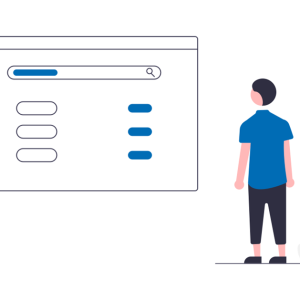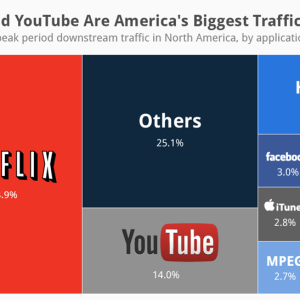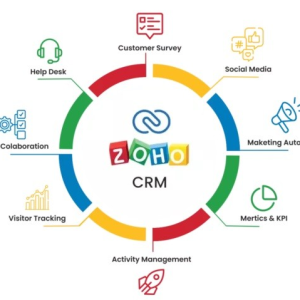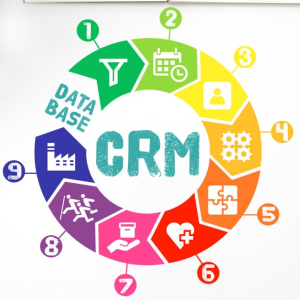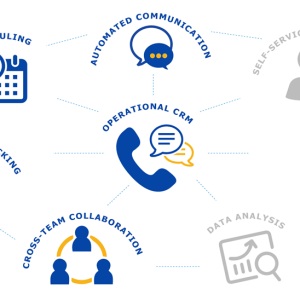Introduction
SEO, or search engine optimization, is the process of improving the ranking of a website on search engines. The higher the ranking, the more likely people are to find the website. This is an essential step for any business that wants to increase web traffic and sales.
There are many things you can do to improve your SEO ranking, but it can be difficult to know where to start. This is where a comprehensive SEO checklist comes in handy. It can help you make sure you’ve covered all the bases and give you the best chance of success. In this article, we’ll take a look at what should be included on your SEO checklist.
SEO Checklist: Basics
The first thing that should be on your SEO checklist is to know the must-haves of SEO, like the tools and plugins you’ll need, as well as the basics of how SEO works.
Google Tag Manager
Google Tag Manager is a free tool that allows you to manage your website tags easily and efficiently. It’s a must-have for any business looking to improve their SEO ranking.
Setting up a google tag manager is simple and only takes a few minutes. The first thing you need to do is create an account and container. Then, you can add and manage your tags from the container.
Google Search Console
Google Search Console is a free tool that helps you track your website’s performance on Google search. It also allows you to submit your sitemap, which helps Google index your website more effectively.
To set up Google Search Console, you need to add and verify your website. You can do this by adding a DNS record or uploading an HTML file. Once your website is verified, you can start using the tool to track your website’s performance.
Bing Webmaster Tools
Bing Webmaster Tools is a free tool from Bing that helps you track your website’s performance on their search engine. It’s similar to Google Search Console, but it also has some unique features, like keyword research and backlink analysis.
To set up Bing Webmaster Tools, you need to add and verify your website. You can do this by adding a DNS record or uploading an HTML file. Once your website is verified, you can start using the tool to track your website’s performance.
Google Analytics
Google Analytics is the perfect way to see how people are interacting with your website and what they’re clicking on. It also provides invaluable insights into which parts of a site might be confusing or difficult, so you can make improvements accordingly! With this information at hand, it’s easy for any business owner to understand why SEO ranking improvement should remain a high priority year-round.
To set up Google Analytics, you need to create an account and add your website. Then, you can start tracking your website’s traffic and performance.
Note: You don’t have to worry about SEO if you’re using WordPress as your CMS. There are plenty of plugins that can help with all the functionality and features needed for proper optimization, so it’s easy peasy! You can choose a plugin from a wide assortment of choices.
Sitemaps
A sitemap is an XML file that contains all the URLs of a website. It’s used by search engines to index websites so they can be found more easily.
There are many ways to generate a sitemap. You can use a sitemap generator tool or plugin, or you can manually create one.
Once you’ve generated your sitemap, you need to submit it to search engines so they can index your website. You can do this in Google Search Console and Bing Webmaster Tools.
Note: Do not forget to update your sitemap whenever you add or remove content from your website. This helps search engines keep their index of your website up to date.
Robots.txt
Robots.txt files are an important part of SEO. They tell search engines what pages on your website can and cannot be crawled and indexed. This helps ensure that your website is being properly indexed by search engines, which can improve your website’s ranking.
Creating a robots.txt file is simple. You can use a text editor like Notepad or TextEdit to create the file. The file must be saved as “robots.txt” and must be placed in the root directory of your website.
Here is an example of a robots.txt file:
User-agent: *
Disallow: /cgi-bin/
Disallow: /tmp/
Disallow: /admin/
The example above tells all user agents (search engines) not to crawl or index the CGI-bin, tmp, and admin directories. You can also disallow specific files, like ” Disallow: /index.html “.
It’s important to note that the robots.txt file is a suggestion, not a command. Search engines can still choose to crawl and index pages that are disallowed in the robots.txt file. So, if you want to prevent a page from being indexed, you should use the noindex meta tag instead.
Meta Tags
Meta tags are HTML tags that provide information about a web page. They are used by search engines to index websites so they can be found more easily.
There are many different types of meta tags, but the most important ones for SEO are the title tag and the description tag.
The title tag is the HTML tag that contains the title of a web page. It should be placed within the head tag of a web page. The title is one of the most important elements of SEO, as it tells search engines what the page is about.
The description tag is the HTML tag that contains a brief description of a web page. It should be placed within the head tag of a web page. The description is used by search engines to generate a snippet of text that appears below the title in the search results.
It’s important to make sure that your title tags and descriptions are unique and relevant to your website. If they’re not, you may be penalized by search engines.
Check Google Console Manual Actions Tab
The Google Console Manual Actions tab contains messages from Google about any manual actions that have been taken on your website. Manual actions are usually taken because of violations of Google’s Webmaster Guidelines.
If you have received a manual action, it’s important to fix the issue as soon as possible. Otherwise, your website may be penalized, which can hurt your website’s ranking and visibility.
To check the Manual Actions tab, log in to Google Search Console and click on the “Search Traffic” tab. Then, click on “Manual Actions”.
If you see any messages, be sure to address them as soon as possible.
Set up an audit for your project
An audit is an important part of SEO. It helps you find and fix any issues that may be hurting your website’s ranking.
There are many different types of audits, but the most important ones for SEO are the technical audit and the content audit.
A technical audit checks for issues like broken links, duplicate content, and incorrect redirects. A content audit checks for issues like thin content, duplicate content, and keyword stuffing.
Both types of audits are important for SEO. If you want to rank well in search engines, you need to make sure that your website is free of any technical and content issues.
The best way to set up an audit is to use a tool like Screaming Frog. Screaming Frog is a software application that crawls websites and looks for issues.
Once you’ve found an issue, you need to fix it. Be sure to document all the changes you make so you can keep track of your progress.
Submit your website to directories
Submitting your website to directories can help improve your website’s visibility and ranking.
When you submit your website to a directory, you are essentially creating a backlink to your website. Backlinks are important for SEO because they show search engines that your website is popular and relevant.
To submit your website to directories, you can use a tool like Moz’s Directory Submission Tool.
Moz’s Directory Submission Tool is a tool that helps you submit your website to the most popular directories.
Be sure to only submit your website to high-quality directories. Otherwise, you may be penalized by search engines.
SEO Checklist: Keyword Research
The next thing you need to do is keyword research. This will help you determine which keywords to target in your SEO efforts.
There are a few different ways to do keyword research, but the most important thing is to use relevant and popular keywords.
Some of the best tools for keyword research are Google Keyword Planner, Moz Keyword Explorer, and SEMrush Keyword Magic Tool. Though there are 100s of tools, let us further discuss how to best use Google Adwords and from there you can take notes on using others.
Google AdWords Keyword Planner
Google AdWords Keyword Planner is a tool that helps you find popular keywords to target in your SEO efforts. To use it, you need to input a keyword and see how many people are searching for it each month. You can also see how competitive the keyword is and get ideas for other related keywords.
Finding keywords that suit your content
Finding the relevant keyword is essential to SEO success. You need to make sure that you are targeting keywords that are relevant to your business and that people are actually searching for.
Once you have made a list of your keywords, you will have more time to change your mind, based on other factors that determine if the keyword you have chosen is best for your website’s visibility.
Identify your competitors’ keywords in Google AdWords
To find the competition of a keyword, you need to input a keyword and see how many people are searching for it each month. This will ensure that you are not targeting a keyword that is too competitive.
To do this, you need to click on “Tools” and then “Keyword Planner”. Then, click on “Search for new keywords using a phrase, website, or category”.
From here, you will be able to input your competitor’s website and see which keywords they are targeting.
High Volume, Low Competition Keywords
The next thing you need to do is identify high volume, low competition keywords. These are keywords that have a high monthly search volume but a low level of competition.
These keywords have an advantage over other keywords because they are easier to rank. However, they may be more difficult to find.
For example, a keyword with 100k volume and .01% competition is easier to rank than a keyword with 50k volume and .02% competition.
High Volume, High Competition Keywords
One might want to avoid high competition keywords since high competition keywords are going to be difficult to rank for, but they are even more advantageous and necessary for certain types of businesses.
For example, a keyword such as “personal injury lawyer” has high competition but is essential for a law firm’s SEO success. In such cases, do not hesitate to use high competition keywords. Just be aware that they will require more effort to rank.
Long-tail keywords
Long-tail keywords are keywords that are more specific and usually have a lower monthly search volume.
For example, “personal injury lawyer in Los Angeles” is a long-tail keyword.
Long-tail keywords are advantageous because they are easier to rank and they can help you target a specific audience.
LSI Keywords
LSI keywords are related keywords that help search engines understand the context of your content.
For example, if you are writing an article about “personal injury lawyers”, some LSI keywords might be “car accident lawyer”, “slip and fall lawyer”, or “medical malpractice lawyer”.
Using LSI keywords is important because it helps your content rank for a variety of related keywords. This, in turn, helps you get more traffic from organic search.
Remember that, LSI keywords will also help with identifying the popular questions being asked by the users. This will further help you to create a headline, or a subheadline intended to attract the traffic searching for those questions.
Negative keywords
Negative keywords are keywords that you do not want to target in your SEO efforts. These are usually keywords that are not relevant to your business or that have a high level of competition.
For example, if you are a personal injury lawyer, you may want to add “free” as a negative keyword because you do not want to target people who are looking for free legal services.
This is a tricky technique, and you need to be careful with it. You do not want to add too many negative keywords as this can hurt your website’s visibility.
Monitor your progress
Once you have implemented all of these SEO techniques, you need to monitor your progress to see if your efforts are paying off. There are several KPIs and tools to help you with those you can check in our other blogs.
Technical SEO Checklist
Improve site speed
Site speed is the amount of time it takes for your web pages to load. This is important for SEO because it helps improve the user experience of your website.
To improve site speed, you need to do the following:
- Use a content delivery network (CDN)
- Minimize HTTP requests
- Optimize images
- Use caching
- Minify CSS and JavaScript
- Reduce redirects
You can use a tool like Google PageSpeed Insights to help you improve your site speed.
Switch to HTTPs
If your website is not using HTTPS, you need to switch to HTTPS. This is because HTTPs are more secure and Google gives preference to websites that use HTTPs.
To switch to HTTPs, you need to buy an SSL certificate and then install it on your server. Once you have done this, you can then change your website’s URL from HTTP to HTTPS.
Redirect HTTP to HTTPS
After you have switched your website to HTTPS, you need to redirect all traffic from HTTP to HTTPS. This is important because it ensures that all traffic is going to the secure version of your website.
To do this, you need to add the following code to your .htaccess file:
RewriteEngine On
RewriteCond %{SERVER_PORT} 80
RewriteRule ^(.*)$ https://www.example.com/$1
Replace “www.example.com” with your domain name.
Now, all traffic from HTTP will be redirected to HTTPS.
Enable Gzip Compression
Gzip compression is a method of compressing files so that they take up less space. This is important for SEO because it helps reduce the size of your web pages, which makes them load faster.
To enable Gzip compression, you need to add the following code to your .htaccess file:
mod_gzip_on Yes
mod_gzip_dechunk Yes
mod_gzip_item_include file .(html?|txt|css|js|php|pl)$
mod_gzip_item_excludeMime ^image/.*
mod_gzip_item_exclude rspheader ^Content-Encoding:.*gzip.*
Replace “.html?|txt|css|js|php|pl” with the file extensions of the files you want to compress. You can also add or remove file extensions as needed.
You can also use a WordPress plugin like WP-Rocket to enable Gzip compression.
Enable Browser Caching
Browser caching is a method of storing files on a user’s computer so that they do not have to be downloaded each time the user visits your website. This is important for SEO because it helps reduce the load time of your web pages.
To enable browser caching, you need to add the following code to your .htaccess file:
## EXPIRES CACHING ##
ExpiresActive On
ExpiresByType image/jpg “access plus 1 year”
ExpiresByType image/jpeg “access plus 1 year”
ExpiresByType image/gif “access plus 1 year”
ExpiresByType image/png “access plus 1 year”
ExpiresByType text/css “access plus 1 month”
ExpiresByType application/pdf “access plus 1 month”
ExpiresByType text/x-javascript “access plus 1 month”
ExpiresByType application/x-shockwave-flash “access plus 1 month”
ExpiresByType image/x-icon “access plus 1 year”
ExpiresDefault “access plus 2 days”
## EXPIRES CACHING ##
Replace “image/jpg”, “image/jpeg”, “image/gif”, and “image/png” with the file extensions of the files you want to cache. You can also add or remove file extensions as needed.
You can also use a WordPress plugin like WP Rocket to enable browser caching.
Optimize Your Images
Images are an important part of SEO because they help make your web pages more visually appealing. However, if you have too many large images on your website, it can slow down your website’s loading time.
To optimize your images for SEO, you need to do the following:
– Use descriptive file names for your images.
– Use alt text to describe your images.
– Compress your images.
– Resize your images.
You can use a WordPress plugin like WP Smush to help you optimize your images for SEO.
Add a Site Map
A site map is an XML file that contains a list of all the pages on your website. This is important for SEO because it helps search engines index your website more effectively.
To add a sitemap to your website, you need to create a file called “sitemap.xml” and upload it to your server. Then, you need to add the following code to your .htaccess file:
RewriteEngine On
RewriteBase /
RewriteRule ^sitemap\.xml$ /sitemap.php
Replace “/sitemap.php” with the URL of your sitemap.xml file.
You can also use a WordPress plugin like Yoast SEO to generate a sitemap for you.
Find and fix crawl errors
Crawl errors are problems that prevent search engines from indexing your website. This can hurt your SEO because it makes it harder for people to find your website.
To find and fix crawl errors, you need to use a tool like Google Search Console. Once you’ve found the crawl errors, you need to fix them so that search engines can index your website properly.
Make sure your site is mobile-friendly
Mobile-friendliness is important for SEO because more and more people are using their phones to browse the internet. If your website is not mobile-friendly, it can hurt your SEO because people will be less likely to find your website.
To make sure your site is mobile-friendly, you need to do the following:
- Use a responsive theme
- Use a mobile-friendly plugin
- Use a mobile-friendly WordPress plugin
You can also use Google’s Mobile-Friendly Test tool to see if your website is mobile-friendly.
Check the page depth of your website
The page depth is the number of clicks it takes to get from the home page to the deepest page on your website. This is important for SEO because it helps search engines index your website more effectively.
To check the page depth of your website, you need to use a tool like Google Analytics. Once you’ve checked the page depth, you need to make sure that all the pages on your website can be reached in 3 clicks or less.
Fix broken links
Broken links are links that lead to pages that no longer exist. This can hurt your SEO because it makes it harder for people to navigate your website.
To find and fix broken links, you need to use a tool like Xenu’s Link Sleuth. Once you’ve found the broken links, you need to either delete them or replace them with working links.
302 redirects
A 302 redirect is a type of redirect that tells search engines to temporarily redirect users to a different page. This is important for SEO because it helps you avoid having duplicate content on your website.
To implement a 302 redirect, you need to add the following code to your .htaccess file:
Redirect 302 /oldpage.html http://www.example.com/newpage.html
Replace “/oldpage.html” with the URL of the page you want to redirect, and “http://www.example.com/newpage.html” with the URL of the page you want to redirect users to.
Adding structured data
Structured data is a type of code that helps search engines understand the content on your website. This is important for SEO because it can help you get rich snippets in the search results.
To add structured data to your website, you need to use a tool like Google’s Structured Data Markup Helper. Once you’ve added the structured data, you need to test it using Google’s Structured Data Testing Tool.
Schema markup
Schema markup is a type of code that helps search engines understand the content on your website. This is important for SEO because it can help you get rich snippets in the search results.
To add schema markup to your website, you’ll need to use the correct code for the type of content you’re trying to markup. For example, if you’re marking up a recipe, you’ll use the Recipe schema.
If you’re not sure which schema to use, you can use Google’s Structured Data Markup Helper to find the right one.
Once you’ve found the right schema, you can add it to your website using one of two methods:
1. Adding the code to your website’s template
2. Adding the code directly to each page
If you choose to add the code to your website’s template, it will be automatically added to every page on your site. This is the easiest method, but it’s not always possible if you’re using a content management system (CMS) that doesn’t allow you to edit the template.
If you choose to add the code directly to each page, you’ll need to add it to each page that you want to markup. This can be a lot of work if you have a lot of pages, but it’s the only way to markup pages that can’t be edited in the template.
Adding schema markup to your website can help you get rich snippets in the search results, which can increase your click-through rate (CTR). It can also help you get your website indexed more quickly.
Check out our blog “Rich Snippets Vs Featured Snippets: Easy SEO for beginners” to know more about snippeting.
Blog Continued…
To find more about the SEO checklist for Link Building, On-page SEO, Content, and Off-page SEO practices, check out our article “Best Advanced SEO Checklist 2022: Beginners Guide Part 2”. Keep reading!
Conclusion
SEO is a complex and ever-changing field, but by following the tips in this article, you can start to improve your website’s ranking and draw in more traffic. Stay tuned to 12channels for more SEO tips.
I hope this article was helpful. If you have any questions, feel free to ask in the comments section below.


